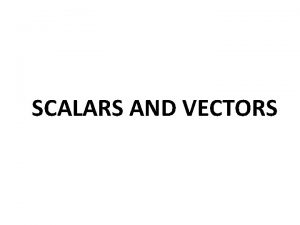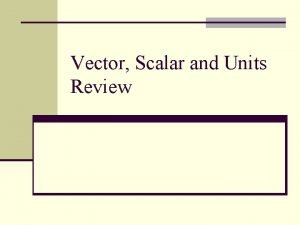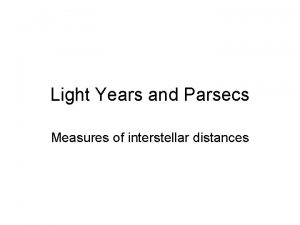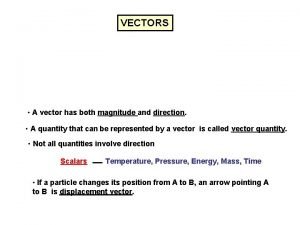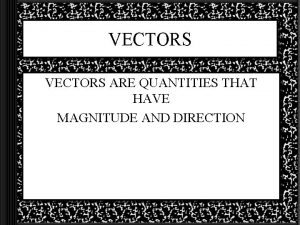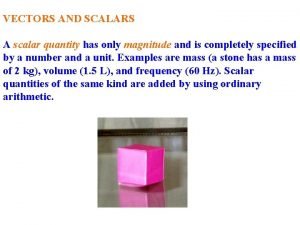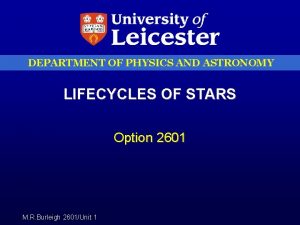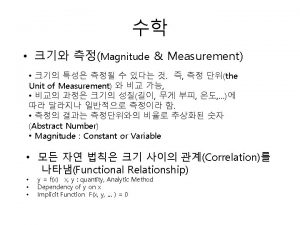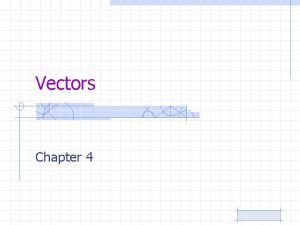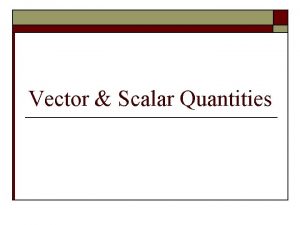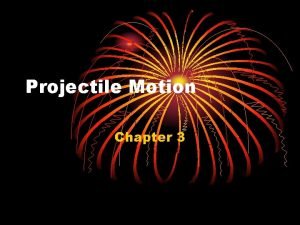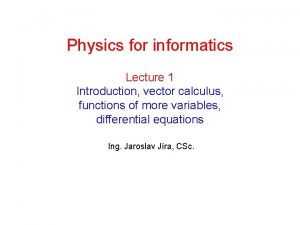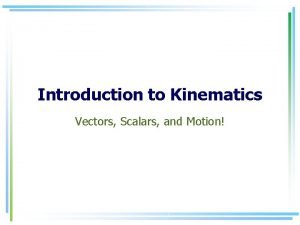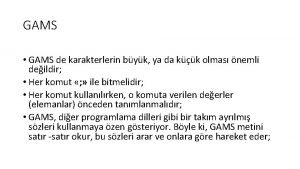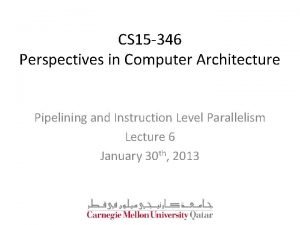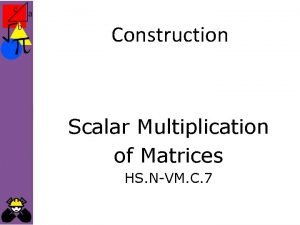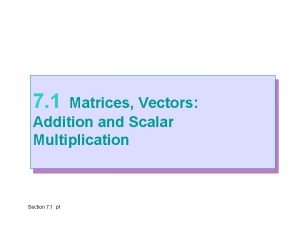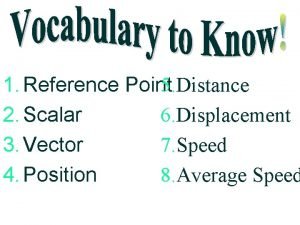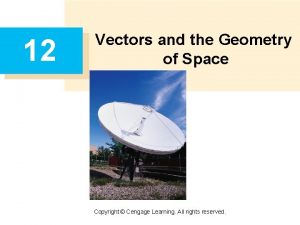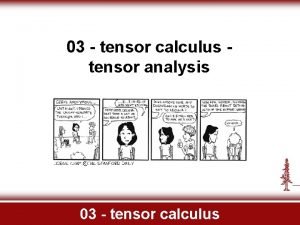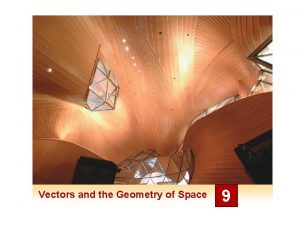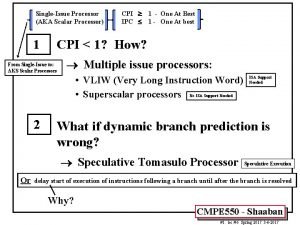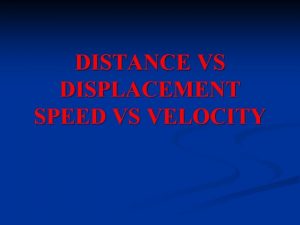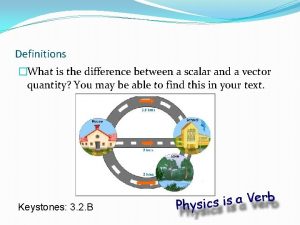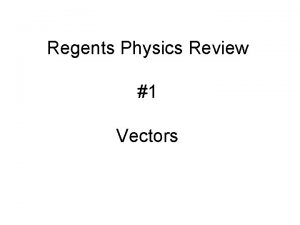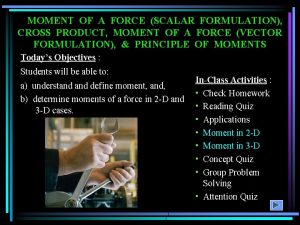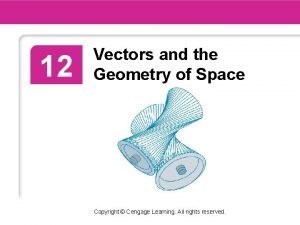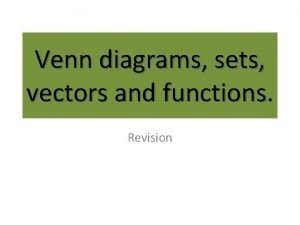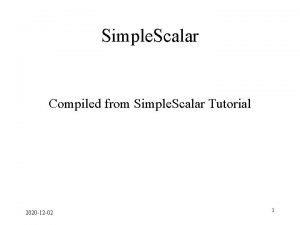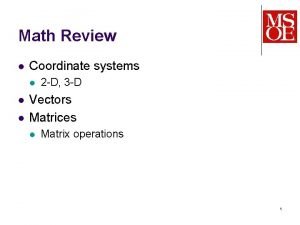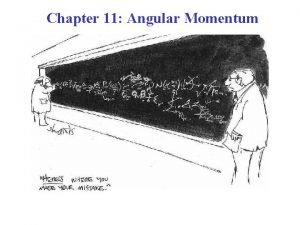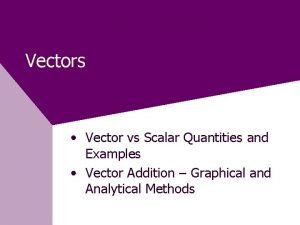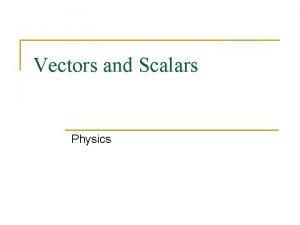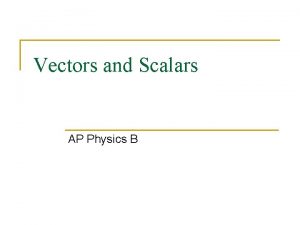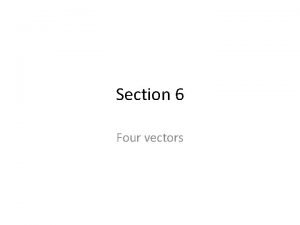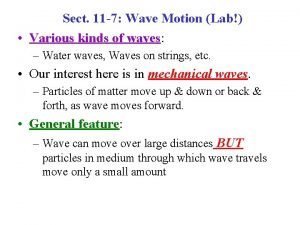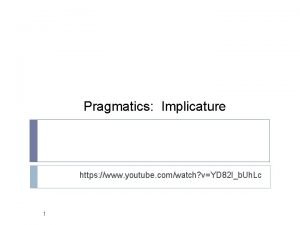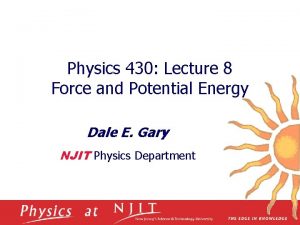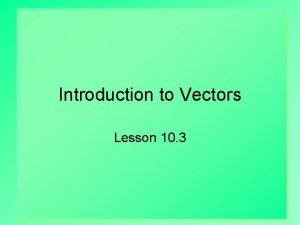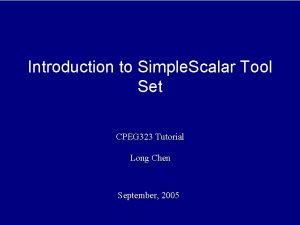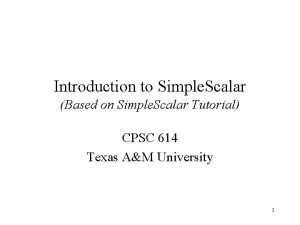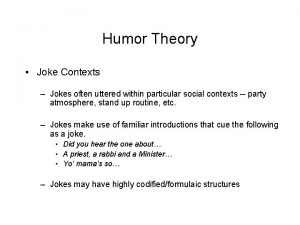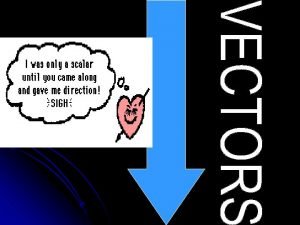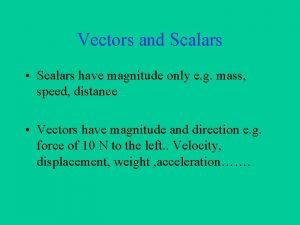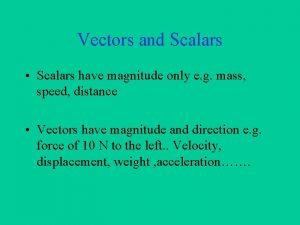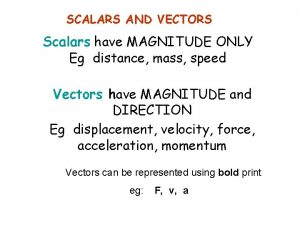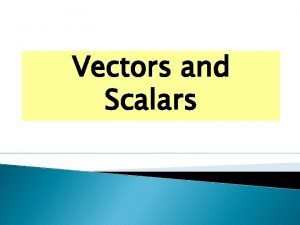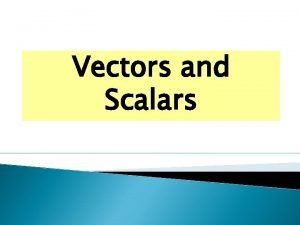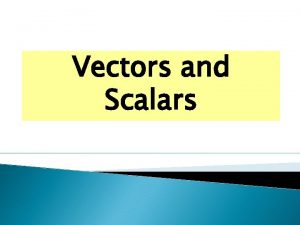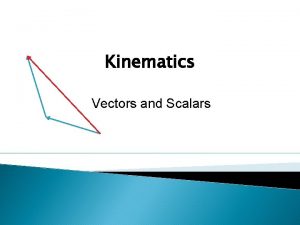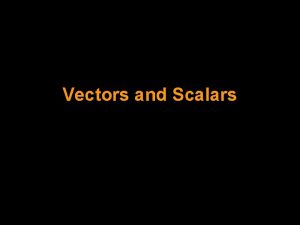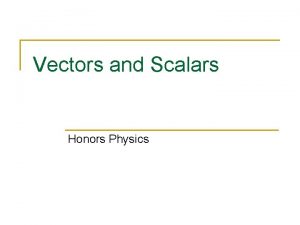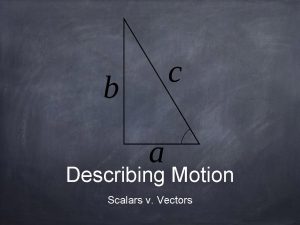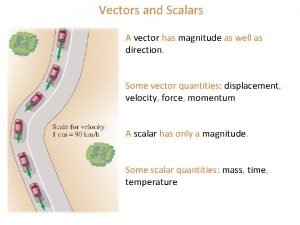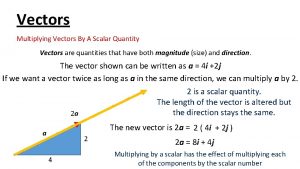DYNAMICS UNIT 1 SCALARS VECTORS Scalar has magnitude






















































































- Slides: 86

DYNAMICS UNIT 1

SCALARS & VECTORS Scalar- has magnitude only ! eg. Speed, distance Vector- has magnitude and direction. eg. Velocity, Acceleration Distance - total length of the path travelled by an object in motion Position- is the distance and direction of an object from a particular reference point

Displacement – the change in position of an object When an object changes its position more than once, total displacement is calculated by adding the displacements.

CONTINUED… Adding/Subtracting vectors

UNIFORM/NON-UNIFORM MOTION Uniform – motion of an object at a constant speed in a straight line Non-uniform – motion in which the objects speed changes or the object does not travel in a straight line.

SPEED/VELOCITY/ACCELERATION Average Speed: Average Velocity: Acceleration:

Information on Linear Motion Graphs Position-Time Graph Slope- represents Velocity-Time Graph Slope – represents Acceleration Area – represents Displacement Acceleration-Time Graph Area- represents change in velocity

RELATIONSHIPS AMONG LINEAR MOTION GRAPHS SLOPE AREA

KINEMATIC EQUATIONS

PROJECTILE MOTION

WHAT IS PROJECTILE MOTION?

INSTRUCTIONAL OBJECTIVES: • Students will be able to: • Define Projectile Motion • Distinguish between the different types of projectile motion • Apply the concept to a toy car and measure its velocity

WHAT IS A PROJECTILE? Projectile -Any object which projected by some means and continues to move due to its own inertia (mass).

PROJECTILE MOTION • Two-dimensional motion of an object • Vertical • Horizontal

PROJECTILES MOVE IN TWO DIMENSIONS Since a projectile moves in 2 -dimensions, it therefore has 2 components just like a resultant vector. • Horizontal and Vertical

TYPES OF PROJECTILE MOTION • Horizontal • Motion of a ball rolling freely along a level surface • Horizontal velocity is ALWAYS constant • Vertical • Motion of a freely falling object • Force due to gravity • Vertical component of velocity changes with time • Parabolic • Path traced by an object accelerating only in the vertical direction while moving at constant horizontal velocity

HORIZONTAL “VELOCITY” COMPONENT • NEVER changes, covers equal displacements in equal time periods. This means the initial horizontal velocity equals the final horizontal velocity In other words, the horizontal velocity is CONSTANT. BUT WHY? Gravity DOES NOT work horizontally to increase or decrease the velocity.

VERTICAL “VELOCITY” COMPONENT • Changes (due to gravity), does NOT cover equal displacements in equal time periods. Both the MAGNITUDE and DIRECTION change. As the projectile moves up the MAGNITUDE DECREASES and its direction is UPWARD. As it moves down the MAGNITUDE INCREASES and the direction is DOWNWARD.

COMBINING THE COMPONENTS Together, these components produce what is called a trajectory or path. This path is parabolic in nature. Component Magnitude Direction Horizontal Constant Vertical Changes

EXAMPLES OF PROJECTILE MOTION • Launching a Cannon ball

HORIZONTALLY LAUNCHED PROJECTILES Projectiles which have NO upward trajectory and NO initial VERTICAL velocity.

HORIZONTALLY LAUNCHED PROJECTILES To analyze a projectile in 2 dimensions we need 2 equations. One for the “x” direction and one for the “y” direction. And for this we use kinematic #2. Remember, the velocity is CONSTANT horizontally, so that means the acceleration is ZERO! Remember that since the projectile is launched horizontally, the INITIAL VERTICAL VELOCITY is equal to ZERO.

HORIZONTALLY LAUNCHED PROJECTILES Example: A plane traveling with a horizontal velocity of 100 m/s is 500 m above the ground. At some point the pilot decides to drop some supplies to designated target below. (a) How long is the drop in the air? (b) How far away from point where it was launched will it land? What do I know? What I want to know? vox=100 m/s t = ? x = ? y = 500 m voy= 0 m/s g = -9. 8 m/s/s 1010 m 10. 1 seconds


VERTICALLY LAUNCHED PROJECTILES NO Vertical Velocity at the top of the trajectory. Vertical Velocity decreases on the way upward Vertical Velocity increases on the way down, Horizontal Velocity is constant Component Magnitude Direction Horizontal Vertical Constant Changes Constant Decreases up, 0 @ top, Increases down

VERTICALLY LAUNCHED PROJECTILES Since the projectile was launched at a angle, the velocity MUST be broken into components!!! vo q vox voy

EQUATIONS • X- Component • Y- Component Note: g= 9. 8 m/s^2 • Vectors

VERTICALLY LAUNCHED PROJECTILES There are several things you must consider when doing these types of projectiles besides using components. If it begins and ends at ground level, the “y” displacement is ZERO: y = 0

VERTICALLY LAUNCHED PROJECTILES You will still use kinematic #2, but YOU MUST use COMPONENTS in the equation. vo q vox voy

EXAMPLE A place kicker kicks a football with a velocity of 20. 0 m/s and at an angle of 53 degrees. (a) How long is the ball in the air? (b) How far away does it land? (c) How high does it travel? /s m 0 0. v 2 = o q = 53

EXAMPLE A place kicker kicks a football with a velocity of 20. 0 m/s and at an angle of 53 degrees. (a) How long is the ball in the air? 3. 26 s What I know vox=12. 04 m/s voy=15. 97 m/s y = 0 g = - 9. 8 m/s/s What I want to know t = ? x = ? ymax=?

EXAMPLE A place kicker kicks a football with a velocity of 20. 0 m/s and at an angle of 53 degrees. (b) How far away does it land? What I know vox=12. 04 m/s voy=15. 97 m/s y = 0 g = - 9. 8 m/s/s What I want to know t = 3. 26 s x = ? ymax=? 39. 24 m

EXAMPLE What I know A place kicker kicks a football with a velocity of 20. 0 m/s and at an angle of 53 degrees. (c) How high does it travel? vox=12. 04 m/s voy=15. 97 m/s y = 0 g = - 9. 8 m/s/s CUT YOUR TIME IN HALF! 13. 01 m What I want to know t = 3. 26 s x = 39. 24 m ymax=?

FACTORS AFFECTING PROJECTILE MOTION • What two factors would affect projectile motion? • Angle • Initial velocity • Visual Initial Velocity Angle

EXAMPLE An object is fired from the ground at 100 meters per second at an angle of 30 degrees with the horizontal ü Calculate the horizontal and vertical components of the initial velocity ü After 2. 0 seconds, how far has the object traveled in the horizontal direction? ü How high is the object at this point?

SOLUTION • Part a • Part b • Part c

NEWTON’S LAWS 1) The law of Inertia - an object at rest or in uniform motion will remain at rest or in uniform motion unless acted on by an external force. 2) F = ma 3) For every action force on an object (B) due to another object (A), there is a reaction force, equal in magnitude but opposite in direction

FORCE FBD’s

MASS Inertial Mass -measure of how strongly the body is accelerated (by A) by a given force. Gravitational Mass -measure of how strongly the body is affected by the force of Gravity

FRAMES OF REFERENCE Inertial frame of reference -Has a constant velocity, meaning moving at a constant speed in a straight line, or it is standing still Non-inertial frame of reference -Does not have a constant velocity, it is accelerating.

RELATIVE MOTION • The motion (or way of moving) of an object viewed by an observer Relative Velocity- the velocity of an object relative to a specific frame of reference

GENERAL RELATIONSHIP A relative to C A relative to B B relative to C Note: the outside subscripts on the right side of the equation (A &C) are in the same order as the subscripts on the left side of the equation and the inside subscripts on the right side of the equation are the same (B)

TYPES OF RELATIVE MOTION PROBLEMS 1) Relative Motion in 1 D 2) Relative Motion in 2 D with perpendicular vectors 3) Relative Motion in 2 D non perpendicular vectors

QUICK PRACTICE 1) A group of teenagers on a ferry walk on the deck with a velocity of 1. 1 m/s relative to the deck. The ship is moving forward with a velocity of 2. 8 m/s relative to the water. a) Determine the velocity of the teenagers relative to the water when they are walking to the bow(front). b) Determine the velocity of the teenagers relative to the water when they are walking to the stern

2) A plane is travelling with a velocity relative to the air of 3. 5 x 102 km/h [N 35°W] as it passes over Hamilton. The wind velocity is 62 km/h[S]. a) Determine the velocity of the plane relative to the ground. b) Determine the displacement of the plane after 1. 2 h.

COMBINING DYNAMICS AND KINEMATICS Recall: Kinematics – the motion of an object with disregard to the cause Dynamics – The cause of the motion

FORCES & FBD’S Common Forces • Gravity ( ) • Normal ( ) • Tension ( ) • Applied ( ) • Friction ( ) Units: Newton's (N)1 N =

NEWTON’S LAWS OF MOTION

Newton’s First Law: (Law of Inertia) If the external net force on an object is zero, the object will remain at rest or continue to move at a constant velocity. Inertia – a measure of an object’s resistance to change in velocity Mass – a measure of the amount of matter in an object

Newton’s Second Law: Newton’s Third Law: For every action force, there exists a simultaneous reaction force that is equal in magnitude but opposite in direction

QUICK PRACTICE 1)At an instant when a soccer ball is slightly off the ground, a player kicks it, exerting a force of 25 N at 40. 0°above the horizontal. The force of gravity acting on the ball is 4. 2 N[down]. Determine the net force. 2) Two children pull a sled across the ice. One child pulls with a force of 15 N [N 35°E], and the other pulls with a force of 25 N[N 54°W]. Ignore friction, find the net force.

FORCE OF FRICTION Force of Friction – acts in the opposite direction as the applied force (opposes motion) Recall: Types of Friction 1) Kinetic Friction - coefficient of kinetic friction ( ) 2) Static Friction -coefficient of static friction( )

QUICK PRACTICE 1) You are pulling a 39 kg box on a level floor by a rope attached to the box. The rope makes an angle of 21° with the horizontal. The coefficient of kinetic friction between the box and the floor is 0. 23. Calculate the magnitude of the tension in the rope needed to keep the box moving at a constant velocity.

2 D PROBLEMS USING NEWTON’S 2 ND LAW 1) A mass of 1. 2 x 102 kg with a force of 1. 5 x 102 N [N] and a force of 2. 2 x 102 N[W] acting on it. Determine the acceleration of the mass. Assume no other forces act on the object other than the ones given.

2) Two ropes are used to lift a 1. 5 x 102 kg beam with a force of gravity of 1. 47 x 103 N[down] acting on it. One rope exerts a force of tension of 1. 8 x 103 N[up 30. 0°left] on the beam, and the other rope exerts a force of tension 1. 8 x 103 N[up 30. 0°right] on the beam. Calculate the acceleration of the beam.

SOLVING NEWTON’S 3 RD LAW PROBLEMS 1) A swimmer with a mass of 56 kg pushes horizontally against the pool wall towards the east for 0. 75 cm/s. Neglecting friction, determine the magnitude of a)The (constant) acceleration b) The force exerted by the swimmer on the wall c) The force exerted by the wall on the swimmer d) The displacement of the swimmer from the wall after 1. 50 s.

2) A projectile launcher fires a projectile horizontally from a platform, which rests on a flat, icy, frictionless surface. Just after the projectile is fired and while it is moving through the launcher, the projectile has an acceleration of 25 m/s 2. At the same time, the launcher has an acceleration of 0. 25 m/s 2. The mass of the projectile is 0. 20 kg. Calculate the mass of the launcher.

ATWOOD MACHINES 6 kg 4 kg • Used to determine the acceleration in a two body pulley system • Could be used to help determine the acceleration due to gravity on a different planet

• Resolve the forces for each mass • Choose the direction of overall acceleration of each object as positive

Mass 1 (6 kg) • Mass 2 (4 kg) • T is the tension in the rope and is the same in both equation Solve for T in one equation

Horizontal Pulley Hyperphysics

INCLINED PLANES • Label the direction of N and mg. N θ mg

INCLINED PLANES • Mark the direction of acceleration a. N a θ mg

INCLINED PLANES • Choose the coordinate system with x in the same or opposite direction of acceleration and y perpendicular to x. y N x a θ mg

INCLINED PLANES • Now some trigonometry y N x a θ 90 - θ θ mg

INCLINED PLANES • Replace the force of gravity with its components. y N x a mg θ n i s θ θ mg mg θ s o c

INCLINED PLANES • Use Newton’s second law for both the x and y directions y N x a mg θ n i s θ θ mg mg θ s o c The force and acceleration in the x-direction have a negative sign because they point in the negative x-direction.

INCLINED PLANES • Why is the component of mg along the x-axis –mgsinθ • Why is the component of mg along the y-axis –mgcosθ y N x a mg θ n i s θ θ mg mg θ s o c

INCLINED PLANES • Why is the component of mg along the x-axis: –mgsinθ • Why is the component of mg along the y-axis: –mgcosθ y N a mg sinθ θ mg x θ mg cosθ

INCLINED PLANES • Why is the component of mg along the x-axis: –mgsinθ • Why is the component of mg along the y-axis: –mgcosθ y N a mg sinθ θ mg x θ mg cosθ

INCLINED PLANES • Why is the component of mg along the x-axis: –mgsinθ • Why is the component of mg along the y-axis: –mgcosθ θ y N a mg sinθ x θ mg mg cosθ sinθ = opposite hypotenuse cosθ = adjacent hypotenuse

QUICK PRACTICE 1) A child on a toboggan slides down a hill with an acceleration of magnitude 1. 9 m/s 2. Friction is negligible. Determine the angle between the hill and the horizontal. 2) A sled takes off from the top of the hill inclined at 6. 0° to the horizontal. The sled’s initial speed is 12 m/s. The coefficient of kinetic friction between the sled and the snow is 0. 14. Determine how far the sled will slide before coming to rest.

INCLINED PULLEY Hyperphysics

UNIFORM CIRCULAR MOTION Uniform Circular Motion – the motion of an object with a constant speed along a circular path of constant radius Centripetal Acceleration- ( ) – the instantaneous acceleration that is directed toward the center of a circular path

Note • the instantaneous velocity, is always tangential. v • the velocity is continually changing as the direction of motion is always changing. • because the velocity is changing, every particle on a rotating rigid body is accelerating. • In uniform circular motion (that is with constant angular velocity), the acceleration is always towards the center.

ac = centripetal acceleration a. T = tangential acceleration v. T = tangential velocity Uniform Circular Motion: - Constant speed - Constant angular velocity Non-Uniform Circular Motion: - Changing speed - Changing angular velocity

EQUATIONS FOR CENTRIPETAL ACCELERATION 1) 3) 2)

PERIOD & FREQUENCY Period – (T)- the time required for a rotating, revolving or vibrating object to complete one cycle (units: s) Frequency – (f)- the number of rotations, revolutions or vibrations of an object per unit of time; the inverse of period (units: Hz)

QUICK PRACTICE 1) At a distance the of 25 km from the eye (center) of a hurricane, the wind moves at nearly 50. 0 m/s. Assume that the wind moves in a circular path. Calculate the magnitude of the centripetal acceleration of the particles in the wind at this distance.

QUICK PRACTICE 2) The planet Venus moves in a nearly circular orbit around the Sun. The average radius of its orbit is 1. 08 x 1011 m. The centripetal acceleration of Venus has a magnitude of 1. 12 x 10 -2 m/s 2. Calculate Venus’s period of revolution around the Sun. a) In seconds b) In Earth days

CENTRIPETAL FORCE Centripetal Force – (Fc) – the net force that causes centripetal acceleration

QUICK PRACTICE 1) A curved road with a radius of 450 m in the horizontal plane is banked so that the cars can safely navigate the curve. Calculate the banking angle for the road that will allow a car travelling at 97 km/h to make it safely around the curve when the road is covered with black ice.

ROTATING FRAMES OF REFERENCE Centrifugal Force – A non existent force which is actually the absence of a centripetal force

Centrifuge – a rapidly rotating device used to separate substances and simulate the effects of gravity Coriolis Force – a fictitious force that acts perpendicular to the velocity of an object in a rotating frame of reference visualizing centrigual/coriolis forces

Artificial Gravity – a situation in which the value of gravity has been changed artificially to more closely match Earth’s gravity Artificial Gravity Explanation

QUICK PRACTICE 1) A spacecraft travelling to Mars has an interior diameter of 324 m. The craft rotates around its axis at the rate required to give astronauts along the interior wall an apparent weight equal in magnitude to their weight on Earth. a) Calculate the speed of the astronauts relative to the center of the spacecraft b) Determine the period of rotation of the spacecraft.
 Vectors and scalars in physics
Vectors and scalars in physics 5 meters scalar or vector
5 meters scalar or vector Example of a vector quantity?
Example of a vector quantity? Entropy is scalar or vector
Entropy is scalar or vector Multiplying or dividing vectors by scalars results in:
Multiplying or dividing vectors by scalars results in: Lesson plan on vectors and scalars
Lesson plan on vectors and scalars Electric intensity is scalar or vector
Electric intensity is scalar or vector Scalar quantity has only
Scalar quantity has only Scalar product of vectors
Scalar product of vectors Parsecs to light-years
Parsecs to light-years A vector has both direction and
A vector has both direction and Vector properties
Vector properties Prasanna balaprakash
Prasanna balaprakash Scalar quantity has only
Scalar quantity has only Units physical quantities and measurements
Units physical quantities and measurements Absolute magnitude unit
Absolute magnitude unit Absolute magnitude unit
Absolute magnitude unit Absolute magnitude unit
Absolute magnitude unit Antiparallel vectors
Antiparallel vectors Polar coordinates examples
Polar coordinates examples Axb
Axb Unit 6 review questions
Unit 6 review questions Vector vs scalar
Vector vs scalar Vector quantity
Vector quantity Scalar kalman filter
Scalar kalman filter Scalar pipeline vs superscalar pipeline
Scalar pipeline vs superscalar pipeline Scalar vector tensor
Scalar vector tensor Vector and scalar quantities
Vector and scalar quantities Scalar projection vs vector projection
Scalar projection vs vector projection Is projectile motion a scalar or vector
Is projectile motion a scalar or vector Nabla operator
Nabla operator Displacement must always indicate what
Displacement must always indicate what Vector quantity
Vector quantity Integral garis dan integral permukaan
Integral garis dan integral permukaan Gams a
Gams a Distance is a scalar
Distance is a scalar Pipelining in computer architecture examples
Pipelining in computer architecture examples Couple formula
Couple formula Scalar multiplication matrix
Scalar multiplication matrix Centripetal acceleration scalar or vector
Centripetal acceleration scalar or vector Transpose matrix rules
Transpose matrix rules Displacement symbol
Displacement symbol Scalar analysis
Scalar analysis Dot product
Dot product Scalar vector tensor
Scalar vector tensor Vector vs scalar
Vector vs scalar Find the scalar and vector projections of b onto a
Find the scalar and vector projections of b onto a Kinetic energy scalar
Kinetic energy scalar Single issue processor
Single issue processor A vector quantity has ______ and direction.
A vector quantity has ______ and direction. Rumus hasil kali skalar dua vektor
Rumus hasil kali skalar dua vektor Scalar replacement of aggregates
Scalar replacement of aggregates Distance scalar
Distance scalar Scalar and vector quantity difference
Scalar and vector quantity difference Scalar quantity and vector quantity
Scalar quantity and vector quantity Scalar control vs vector control
Scalar control vs vector control Scalar equation of a plane
Scalar equation of a plane Scalar and vector quantization
Scalar and vector quantization Ev 7300
Ev 7300 A 149 kilogram baseball initially
A 149 kilogram baseball initially Moment of a force scalar formulation
Moment of a force scalar formulation Moment cross product
Moment cross product Cisc scalar processor
Cisc scalar processor Vectors and the geometry of space
Vectors and the geometry of space Venn diagram meanings
Venn diagram meanings Simplescalar simulator
Simplescalar simulator Example of speed
Example of speed Scalar matrix
Scalar matrix Glm multiply vector by scalar
Glm multiply vector by scalar Scalar chain clipart
Scalar chain clipart Moment of couple formula
Moment of couple formula Angular momentum is equal to
Angular momentum is equal to 4000 calories scalar or vector
4000 calories scalar or vector Vector vs scalar examples
Vector vs scalar examples Head to tail rule
Head to tail rule Scalar physics
Scalar physics Carl yaztremski
Carl yaztremski Is radius scalar or vector
Is radius scalar or vector Which wave
Which wave Implicature
Implicature Force is the integral of potential energy
Force is the integral of potential energy Scalar potential
Scalar potential Singular matrix example
Singular matrix example Scalar vs vector
Scalar vs vector Simplescalar simulator
Simplescalar simulator Fetch:ifqsize
Fetch:ifqsize What is a metaphor math joke
What is a metaphor math joke



